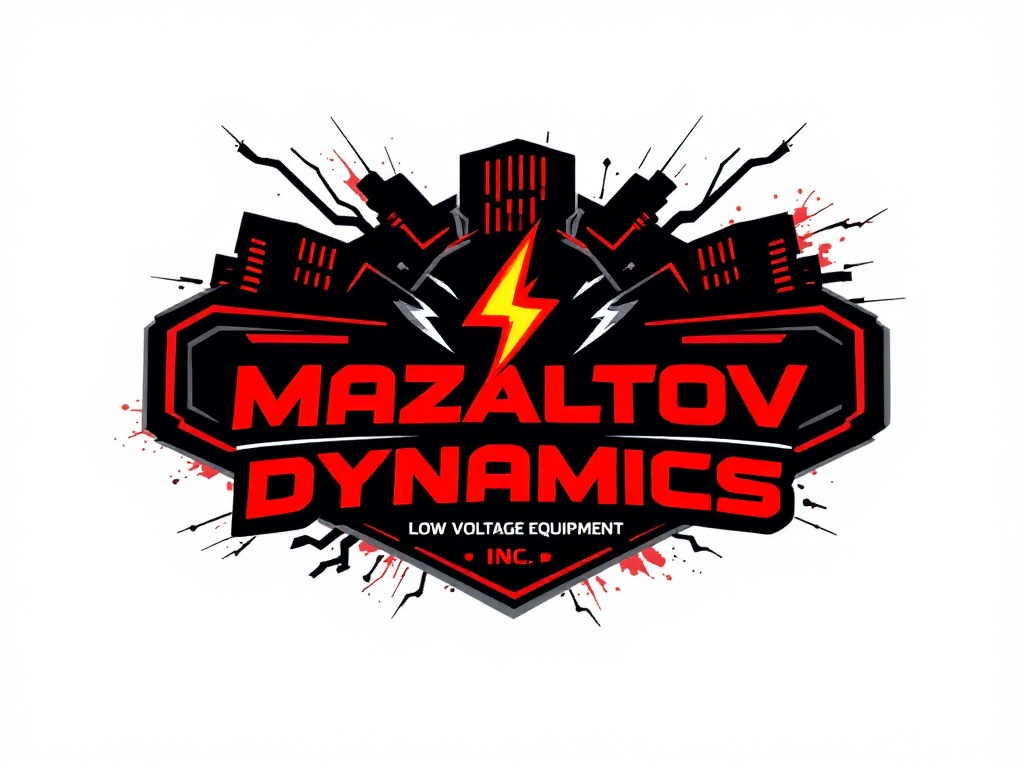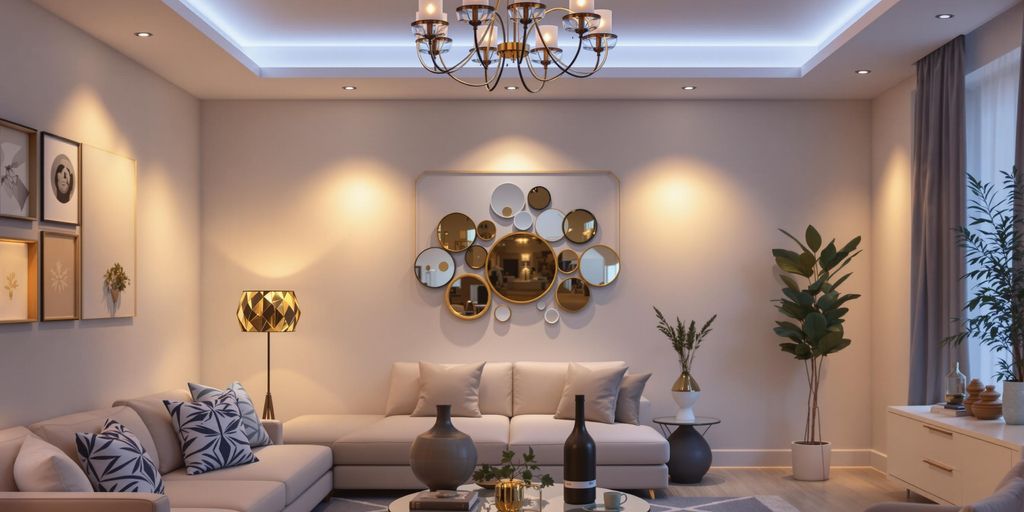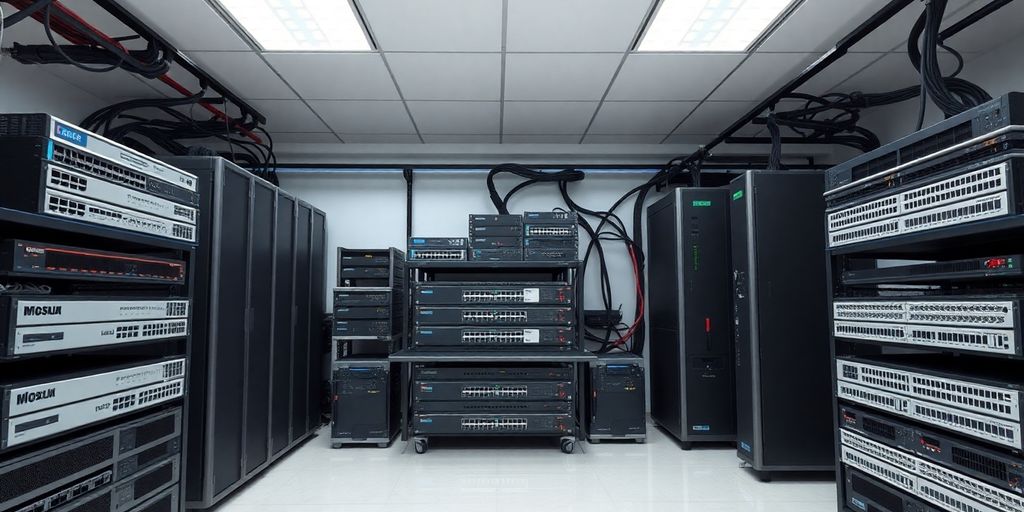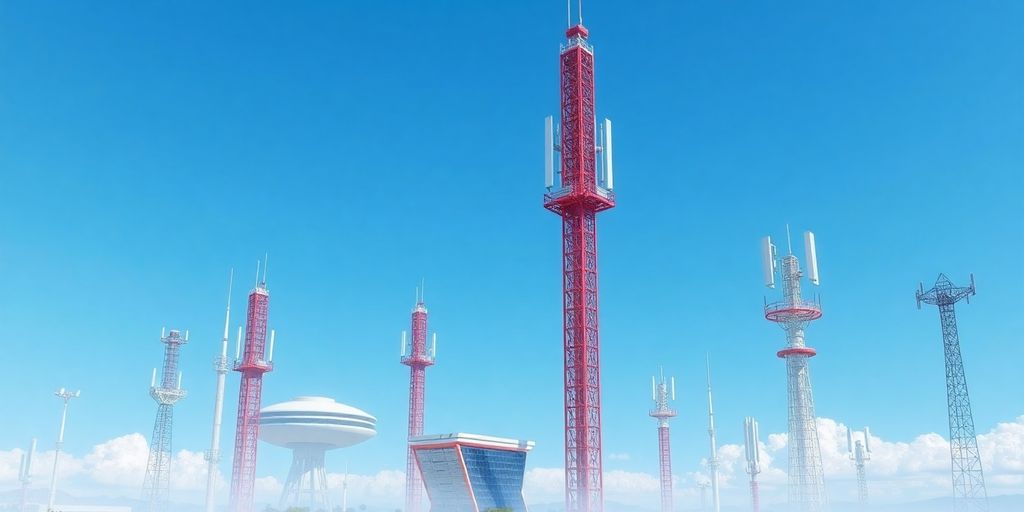Thinking about giving your home or office a fresh look in 2024? Lighting retrofitting services might just be the way to go. It’s not just about changing bulbs; it’s about transforming spaces. Whether you’re upgrading to sleek LEDs or exploring smart lighting options, retrofitting can make a big difference. Plus, it’s energy-efficient, which is a win-win for your wallet and the planet. Let’s dive into what makes lighting retrofitting a smart choice this year.
Key Takeaways
- Lighting retrofitting services are a cost-effective way to upgrade your space without major renovations.
- Choosing the right lighting involves considering factors like color temperature and brightness for the perfect ambiance.
- LEDs are a popular choice for retrofitting due to their energy efficiency and long lifespan.
- Smart lighting features, like dimming and remote control, add convenience and can save on energy costs.
- Regular maintenance ensures your retrofit lighting system stays efficient and lasts longer.
Understanding Lighting Retrofitting Services
What is Lighting Retrofitting?
Lighting retrofitting is all about upgrading your current lighting system to more efficient and modern alternatives. Imagine swapping out those old, energy-guzzling bulbs for sleek, energy-saving LED lights. That’s retrofitting. It’s a way to breathe new life into your lighting without the hassle of a complete overhaul. By using retrofit kits, you can easily adapt new lights to existing fixtures, saving both time and money.
Benefits of Retrofitting Services
Retrofitting offers a bunch of perks that are hard to ignore:
- Energy Efficiency: Retrofitted lights, especially LEDs, use far less power than traditional bulbs, which means lower energy bills.
- Longevity: These lights last much longer, so you won’t be changing bulbs as often, reducing waste and maintenance hassles.
- Improved Light Quality: Retrofitting can drastically enhance the quality of light in your space, making it brighter and more pleasant.
Retrofitting is like giving your space a facelift, but for your lights. It’s not just about saving money; it’s about creating a better, more sustainable environment.
Common Misconceptions About Retrofitting
There are a few myths floating around about lighting retrofitting:
- "It’s too expensive." While the initial cost might seem high, the long-term savings on your energy bill and reduced maintenance can outweigh the upfront investment.
- "It won’t work with my current setup." Most retrofit solutions are designed to fit existing fixtures, making them a versatile option for many setups.
- "The light quality isn’t as good." In reality, retrofitted lights often provide superior light quality, which can be customized to fit your specific needs.
LED lighting retrofits significantly reduce energy consumption, costs, and carbon emissions. However, implementing these retrofits across multiple states presents various challenges that need to be addressed for successful execution.
Choosing the Right Retrofit Lighting Solutions

Factors to Consider When Selecting Retrofit Lights
When you’re picking out retrofit lights, there are a few things you gotta keep in mind to make sure they fit your space just right. First off, think about the size and type of the lights. Bigger spaces like warehouses usually need more powerful fixtures, while smaller spots like offices might do better with compact options. Matching the light size to your space can save you a lot on energy bills.
Next, consider the color temperature and brightness. These affect how the space feels and can impact both customer and employee experiences. You’ll also want to look at wattage and voltage to optimize performance and keep costs down.
Here’s a quick list to guide your selection:
- Size and Type: Choose based on the area size and function.
- Color Temperature: Decide on the warmth or coolness of the light.
- Brightness: Ensure it meets the needs of the space.
- Energy Efficiency: Look at wattage and voltage for savings.
Comparing LED and Fluorescent Options
In 2024, LED lighting retrofit options have become more cost-efficient and offer a diverse range of styles, making them an attractive choice for businesses. LEDs are known for their high efficiency and long lifespan, which is great for cutting down on replacements and maintenance. They also have a good color rendering index (CRI), which means colors look more natural under these lights.
Fluorescents, on the other hand, are often cheaper upfront and can be a good choice if you’re not ready to switch to LED. They still offer decent efficiency but might not last as long.
Here’s a simple comparison:
| Feature | LED | Fluorescent |
|---|---|---|
| Efficiency | High | Moderate |
| Lifespan | Long | Shorter |
| Upfront Cost | Higher | Lower |
| Color Rendering | Excellent | Good |
Understanding Color Temperature and Brightness
Color temperature and brightness are big deals when it comes to setting the right mood in a space. Color temperature is measured in Kelvin (K) and can affect how a room feels. For example, a lower Kelvin (around 2700K) gives off a warm, cozy vibe, while higher Kelvin (5000K and above) feels more like daylight and can be energizing.
Brightness, usually measured in lumens, determines how much light you get from a bulb. It’s important to match the brightness to the purpose of the room—too dim can be dreary, too bright can be harsh.
Picking the right color temperature and brightness can make all the difference in how a space looks and feels, influencing everything from mood to productivity.
The Process of Lighting Retrofitting
Assessing Your Current Lighting Setup
Before diving into any retrofitting project, the first step is to thoroughly check out your current lighting setup. This means taking a good look at what you already have. Are some areas dimmer than others? Are there bulbs that are always flickering or seem to burn out quickly? This evaluation helps you figure out what needs fixing or upgrading. You’ll want to note the types of fixtures you have, how often they’re used, and any complaints you’ve heard about the lighting.
Steps to Implement Retrofit Solutions
Once you know what needs changing, it’s time to plan the retrofit. Here’s a simple breakdown:
- Choose the Right Lights: Pick lights that fit your needs. Think about size, brightness, and energy efficiency. LEDs are a popular choice because they save energy and last longer.
- Plan the Installation: Decide when and how to install the new lights. It might be best to do this after hours or in stages to avoid disrupting daily activities.
- Install and Configure: Swap out the old bulbs or fixtures with the new ones. If you’re adding smart controls, set them up to adjust lighting based on time or room occupancy.
Ensuring Minimal Disruption During Installation
Changing out lights in a busy place can be tricky. To keep things running smoothly, plan the installation for times that won’t interfere with business, like weekends or evenings. It’s smart to do the work in phases, so there’s always enough light for people to keep working or shopping. Electricians often work in stages, making sure each area is up and running before moving on to the next. This phased approach helps prevent any area from going dark unexpectedly.
Tip: Good planning and communication with your team can make the retrofitting process a breeze, keeping everyone happy and operations running smoothly.
Innovations in Retrofit Lighting Technology
Smart Retrofit Lighting Features
Imagine controlling your entire lighting system with just a smartphone. This is now a reality with smart retrofit lighting. These systems allow you to adjust brightness, color, and even set schedules remotely. It’s like having a remote control for your lights, making it easier than ever to manage energy use and ambiance. Smart lights are a game changer for commercial spaces, offering a blend of efficiency and convenience. Rab Lighting’s C-Wrap linear luminaire exemplifies these innovations with its smart controls and high efficacy.
Dimmable and Adjustable Options
Gone are the days when you needed to switch out bulbs to change your lighting mood. With dimmable and adjustable retrofit lights, you can easily alter the light intensity and color temperature. Want a cozy, warm glow for a dinner setting? Or maybe a bright, white light for a meeting room? You can do it all with a simple dimmer switch. These lights provide flexibility and adaptability, making them a perfect fit for any environment.
Energy Efficiency Advancements
Energy efficiency is at the heart of modern lighting innovations. Retrofit lighting systems have made huge strides in reducing power consumption while maintaining or even enhancing light quality. This not only cuts down on utility bills but also aligns with sustainability goals. Many retrofit solutions now boast energy savings of up to 60% compared to traditional lighting systems. Plus, they often have a longer lifespan, which means fewer replacements and less waste. The RTLED Troffer retrofit kits highlight these advancements, offering both efficiency and sustainability.
Maintaining Your Retrofit Lighting System
Regular Maintenance Tips
Keeping your retrofit lighting system in top shape is not just about having it installed and forgetting about it. Regular maintenance is key to ensuring your lights remain efficient and effective over time. Here are some crucial tips:
- Clean Fixtures Regularly: Dust and grime can build up on your lights, reducing their brightness. Make it a habit to clean your fixtures every few months to keep them shining brightly.
- Inspect for Wear and Tear: Look for any signs of wear, like flickering or dimming lights. These could indicate potential issues that need addressing before they become bigger problems.
- Update Smart Systems: If your lighting system includes smart features, keep the software updated to benefit from the latest enhancements and efficiency improvements.
Regular maintenance not only helps in maintaining light quality but also extends the lifespan of your lighting system, ensuring you get the most out of your investment.
Troubleshooting Common Issues
Even with regular care, issues can pop up. Here’s how to tackle some common problems:
- Flickering Lights: This might be due to incompatible dimmer switches or faulty wiring. Check your connections or consult an electrician if needed.
- Burnt-Out Bulbs: Using the wrong wattage can cause bulbs to burn out prematurely. Always use the manufacturer’s recommended wattage.
- Uneven Lighting: Adjust the spacing or aiming of your lights to ensure even distribution.
Maximizing Lifespan and Efficiency
To get the most from your retrofit lights, consider these strategies:
- Plan for Component Replacements: Schedule replacements for bulbs and other components before they fail to avoid unexpected downtime.
- Professional Inspections: Have a professional inspect your system annually. They can catch potential issues early and suggest improvements.
- Monitor Energy Usage: Use built-in monitoring tools to track energy consumption and identify areas for improvement.
By sticking to these maintenance practices, you can keep your factory lighting running efficiently and extend the life of your retrofit system, ensuring a well-lit and productive environment.
Commercial Applications of Retrofit Lighting

Enhancing Office Environments
In the hustle and bustle of office life, good lighting is often overlooked but essential. Retrofit lighting can significantly boost productivity by providing better illumination, reducing eye strain, and creating a more inviting workspace. LED retrofits, for instance, offer adjustable brightness and color temperatures, allowing for customization to suit different tasks or times of day. This adaptability not only improves focus and comfort but also contributes to energy savings.
- Improve employee productivity with better lighting
- Reduce energy consumption with efficient LED solutions
- Customize lighting settings for different tasks
Improving Retail Spaces
Retail environments thrive on aesthetics. The right lighting can make products pop, creating an engaging shopping experience. Retrofit lighting solutions in retail spaces can enhance color accuracy and brightness, making merchandise more appealing. LED options are particularly popular for their ability to highlight product details without generating excess heat, which can be a concern in smaller spaces.
- Highlight merchandise with accurate color rendering
- Create an inviting atmosphere for customers
- Reduce cooling costs with low-heat lighting options
Optimizing Industrial Lighting
In industrial settings, safety and efficiency are paramount. Retrofit lighting can transform these spaces by providing brighter, more consistent lighting that enhances visibility and reduces accidents. High-bay LED lights are a common choice, offering powerful illumination that covers large areas. Additionally, these lights can withstand harsh conditions, making them ideal for factories and warehouses.
- Enhance safety with improved visibility
- Reduce maintenance with durable lighting solutions
- Increase energy efficiency in large spaces
Retrofitting your commercial space with modern lighting solutions not only enhances operations but also adds value to your property. It’s a smart investment that pays off in both aesthetics and functionality.
Cost-Effectiveness of Retrofitting Services
Calculating Long-Term Savings
Switching to LED retrofitting can lead to substantial savings over time. Imagine reducing your energy bill by up to 60%—that’s what many businesses experience when they make the switch. The initial cost might seem high, but the payoff is in the longevity and efficiency of the lights. LEDs last longer, meaning fewer replacements and less maintenance. Over the years, these savings add up, making it a financially savvy choice.
Understanding Initial Investment
The upfront cost of retrofitting can be a hurdle for some. It’s important to weigh this against the long-term benefits. Sure, you’re looking at a significant investment initially, but consider this: traditional lighting systems require more frequent replacements and consume more energy. By investing in retrofit solutions now, you’re setting yourself up for lower operational costs in the future.
Government Incentives and Rebates
Don’t forget about potential financial help from the government. Many regions offer incentives and rebates for businesses that choose energy-efficient lighting solutions. These programs can significantly offset initial costs, making retrofitting more accessible. Always check local regulations and available programs to maximize your savings.
Retrofitting is not just about saving money; it’s about investing in a sustainable future. By reducing energy consumption, you’re not only cutting costs but also contributing to a greener planet. It’s a win-win for your wallet and the environment.
Conclusion
So, there you have it! Retrofitting your lighting isn’t just about swapping out bulbs; it’s about transforming your entire space. Whether you’re looking to save on energy bills, improve light quality, or just give your home a fresh look, retrofit lighting is the way to go. It’s a smart investment that pays off in comfort and style. Plus, with so many options out there, you can find the perfect fit for any room or mood. So why wait? Start planning your lighting upgrade today and see the difference it makes. Here’s to brighter, better-lit spaces in 2024!
Frequently Asked Questions
What is lighting retrofitting?
Lighting retrofitting involves updating old light fixtures with new, energy-efficient ones without needing to completely replace the existing setup.
Why should I consider retrofitting my lights?
Retrofitting your lights can save you money on energy bills, improve light quality, and increase the lifespan of your lighting system.
Do I need to rewire my home for retrofit lighting?
No, retrofit lighting allows you to upgrade to modern lights using your existing sockets, avoiding the need for extensive rewiring.
Are LED lights better than fluorescent lights for retrofitting?
LED lights are generally more energy-efficient and have a longer lifespan compared to fluorescent lights, making them a popular choice for retrofitting.
How can I ensure minimal disruption during the retrofitting process?
To minimize disruption, plan the installation during off-hours and consider working with professionals who can efficiently manage the process.
What maintenance is required for retrofit lighting systems?
Regular cleaning and occasional checks for wear or damage are needed to keep your retrofit lighting system working efficiently.



